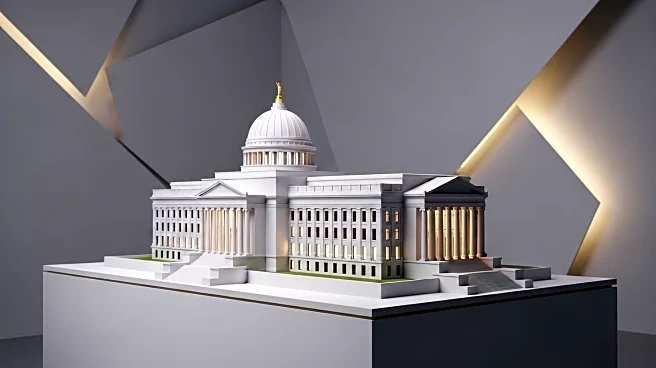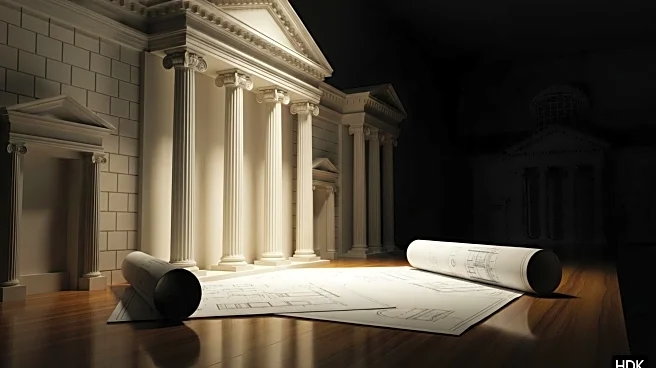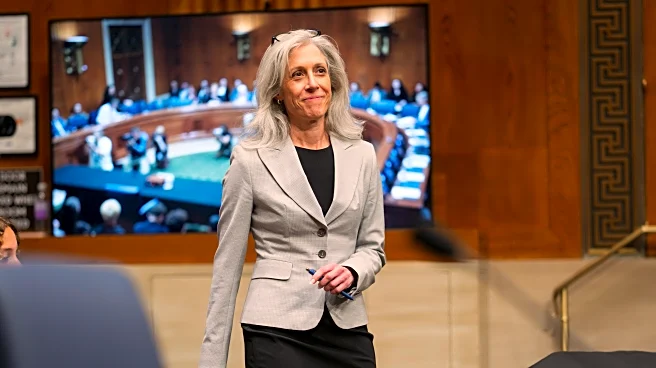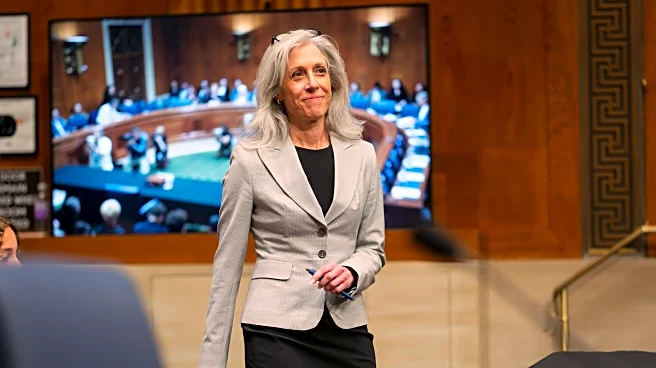What is the story about?
What's Happening?
President Trump has signed an executive order mandating classical architecture as the preferred style for federal buildings. This move is part of a broader initiative to replace brutalist and modernist styles, which have been prevalent since the mid-20th century, with classical designs inspired by Western civilization. The Department of Housing and Urban Development is already relocating from its brutalist headquarters in Washington, D.C., as part of this initiative. The General Services Administration (GSA) is tasked with implementing the order, although it currently lacks a permanent leader. This policy marks a significant shift from previous architectural guidelines established during the Truman administration, which favored cost-effective brutalist designs.
Why It's Important?
This executive order could significantly impact the architectural landscape of federal buildings across the United States. By prioritizing classical architecture, the administration aims to reflect American exceptionalism and inspire civic pride. However, this shift may also lead to increased construction costs and potential delays as new projects are redesigned to meet the classical criteria. Critics argue that this move restricts architectural creativity and imposes a narrow aesthetic vision on public spaces. The decision may also influence public opinion and political discourse, as it aligns with broader cultural and ideological themes promoted by the administration.
What's Next?
The GSA will oversee the transition to classical architecture, but the lack of a permanent administrator may slow progress. The relocation of federal agencies, such as HUD, will continue as part of this initiative. The administration's focus on classical architecture may prompt reactions from architectural professionals and public stakeholders, potentially leading to debates over the role of government in dictating architectural styles. Future federal building projects will need to align with the new guidelines, which could affect timelines and budgets.
Beyond the Headlines
The emphasis on classical architecture reflects a broader cultural agenda to promote traditional values and aesthetics. This initiative may influence other areas of public policy, such as education and cultural heritage preservation. The decision also raises questions about the balance between government authority and professional expertise in architectural design. Long-term, this policy could reshape the identity of federal spaces and influence public perceptions of government institutions.
AI Generated Content
Do you find this article useful?















